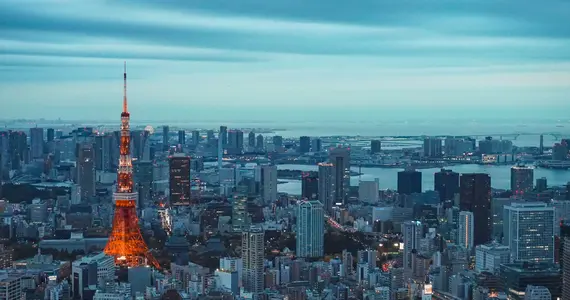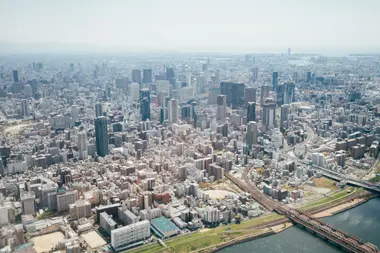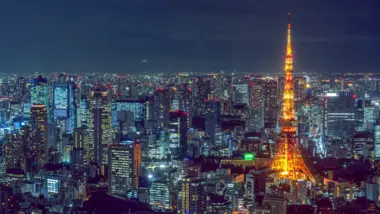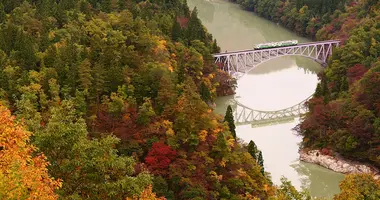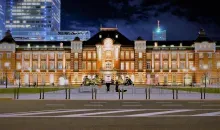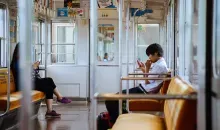How to get from Osaka to Tokyo
Getting from Osaka, the largest city in Kansai, out to Tokyo, the largest city in Japan (and the world as a whole via population), is a common journey for those either starting their Japan journeys in Kansai or those who are rounding out the last leg of their trip.
Getting to Tokyo from Osaka via Shinkansen bullet train
Shinagawa/Tokyo Station
This journey involves two of Japan’s most exciting and culturally diverse cities and is made especially easy with the Tokaido-Sanyo Shinkansen bullet train.
Heading out to Tokyo, travelers will depart from Shin-Osaka Station in the Yodogawa District in Osaka City. Within Tokyo, disembarkments can be made at either Shinagawa Station or Tokyo Station, both of which are conveniently located within the city’s center and on the JR Yamanote Line, along with being stops for a number of other JR and Subway Lines.
The first train out from Shin-Osaka Station towards Tokyo departs at 6:00 AM and the final train leaves at 9:24 PM. The journey takes approximately 2 hours and 30 minutes and traverses 505 kilometers (313 miles). The cost of a ticket between Osaka and Tokyo starts at 13,620 yen and goes up in price depending on whether a seat reservation is made and which Shinkansen bullet train is being ridden. The fare is covered for users of the Japan Rail Pass, reservation included; however, to ride the Nozomi or Mizuho Shinkansen Shinkansen, there is a supplemental fee of 4,960 yen.
Different types of Shinkansen bullet trains available on this itinerary:
| Nozomi Shinkansen Bullet Train | Mizuho Shinkansen Bullet Train | Hikari Shinkansen Bullet Train | Kodama Shinkansen Bullet Train |
*NOTE: All Shinkansen bullet trains on the Tokaido-Sanyo Line are accessible with the JR Pass; however, an additional fee of 4,960 yen is required to ride the Nozomi and Mizuho trains from Tokyo to Osaka.
Reserve Shinkansen tickets from Osaka to Tokyo!
Reserving seats on the Shinkansen
On Shinkansen trains, individual ticket holders and holders of JR Passes can reserve seats in advance of boarding. Reservations are not always required for Shinkansen bullet trains because many of them have non-reserved cars with seats that are available on a first-come, first-served basis. These are often car numbers 1-4.
On certain trains, however, reservations are required for every car. However, we also strongly advise all visitors to try and book reservations for tickets during Japan's busiest travel seasons, which include the spring and the New Year's holiday. When purchasing a single ticket, a reserved seat is an additional cost; however, holders of a JR Pass are not charged this fee.
Oversized baggage on the Shinkansen
A variety of requirements must be fulfilled in order for passengers with large suitcases to board the bullet train. According to Japan Railway regulations, luggage over 160 cm in length, width, and height needs to be checked into the special bulky baggage section at the back of the train car. Owners of such bags must additionally make reservations for seats near this section. Please be advised that you cannot board the Shinkansen with luggage that are larger than 250 cm overall.
Baby carriages, musical instruments in cases, and sporting goods (bikes, snowboards, etc.) in cases are exempt from the baggage restrictions.
Exploring Osaka
Osaka, the third-most populous city in Japan and the most populous city in Kansai, is well-known for its lively atmosphere, delicious street cuisine, and eccentric locals. Tokyo is generally seen as a partner city to Osaka (or rival city, depending on who you ask). When visiting Japan, tourists frequently visit both cities and compare their experiences there; this is easiest accomplished by easily taking the Shinkansen bullet train to go between each location back-to-back.
The busy areas of Umeda, Namba, and Dotonbori in central Osaka are frequently visited by tourists; they are crammed with different businesses and have a distinctively Japanese urban landscape. Dotonbori’s running Glico Man, sometimes referred to as the symbol of Osaka, is a famous photo location overlooking the area’s iconic bridge. Honmachi, however, is a more tranquil neighborhood that is still close to the city's center, so you won't have to go far to find a more subdued setting if you want to escape the crowds and commotion.
Even though Osaka is a city known for its fun environment, it is also a place to visit for art and culture. In 1970, the city hosted the World's Expo, which is why artist Taro Okamoto built the famous “Tower of the Sun” (太陽の塔). The tower is situated at Expo Park and is still on display to be seen by visitors. The Mozu Tombs, a unique site with a group of 5th-century kofun (burial tombs), are a must-see for those interested in even more ancient history.
The Mozu Tombs, a unique site with a group of 5th-century kofun (burial tombs), are a must-see for those interested in even more ancient history. Within the metropolitan area of Osaka, these old burial grounds are a unique historic site amidst the modern architecture. The burial grounds have various sizes and forms when viewed from above, with the larger ones having the appearance of key holes.
Shin-Osaka Station, a more recent station built in 1964 to handle the nation's inaugural Shinkansen bullet train run, will be the main servicing station for passengers traveling to and from Osaka via Shinkansen. Check out Kiyasuso Hanpo, which is nearby. It's well-known for its distinctively rectangular mitarashi dango, which is chewy mochi that has been roasted and coated in sweet sauce. Chikira House is a specialty store selling Nissin Chicken Ramen goods within Shin-Osaka Station. Get savory snacks, gifts unique to Osaka, and even soft-serve ice cream flavored like chicken ramen. A special treat that will undoubtedly stick in your memories while in Osaka!
Exploring Tokyo
Often the initial destination for those traversing Japan’s “Golden Route,” the nation’s capital of Tokyo has something for everyone, on account of it being the world’s largest city in terms of population. From exploring the light-filled night streets of Shinjuku to the slower, hip neighborhoods like Koenji and Gakugei Daigaku, there is adventure to discover at practically every train station within this urban metropolis.
And speaking of these train stations, Tokyo’s well-developed and far-reaching train network is perfect for getting to where you need to go and made only easier for holders of the JR Pass. Using major stations such as Shinjuku, Shibuya, Tokyo, or Ikebukuro Stations as a central hub, much of the city is widely accessible via the many train lines, from the ones operated by JR to the Subway Metro System. It’s easy to choose a train station you may be unfamiliar with and take the opportunity to discover a new neighborhood. There are charming cafes, stylish shops, and a medley of other attractions to go out and see.
For traveling foodies, Tokyo is an essential destination, home to an endless array of quality restaurants, from unassuming local shops to world-famous establishments. Food options also come in the form of quick, easy, and affordable street food to luxurious and acclaimed high-end dining (and in fact, Tokyo is home to the most Michelin-starred establishments in the world). For the ultimate culinary experience, hip neighborhoods like Hatagaya and Setagaya are often visited for their lively sake and wine bars, and Higashi Azabu is home to a medley of acclaimed restaurants for the perfect night-time meal.
The Shinkansen bullet train leaves from Shin-Osaka Station and arrives in Tokyo at either Shinagawa Station or Tokyo Station, which are both on the JR Yamanote Line and located in the center of Tokyo. The area around Tokyo Station is mostly commercial, featuring luxury department shops, retail malls, fast food and fine dining options, as well as serene parks like Hibiya Park and Imperial Palace Park. The station is home to a huge network of additional shops, restaurants, and department stores.
Shinagawa Station is situated in a business-oriented area of Tokyo, and the neighborhood has plenty of fast-casual restaurants that cater to office workers at affordable prices. However, there are additional things to do for visitors and those waiting to board Shinkansens that are departing, like visiting the Nikon Camera Museum and Maxell Aqua Park.
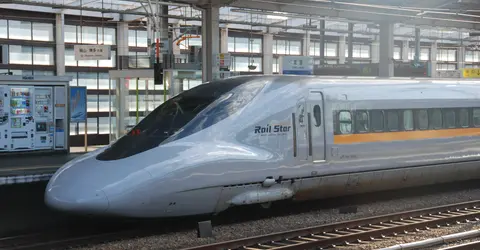
Hikari Shinkansen
@Wikimedia
Between two metropolises
Whether it’s the first or last major Shinkansen ride of the journey, travelers can rest assured that they will be going from one cultural hotspot to the next. Tokyo and Osaka are two cities that are constantly compared, but its important to let the rivalry sentiments go for a bit to take in the best parts of both destinations. Be it the historic sites existing amongst modern metropolitan surroundings, towering skyscrapers, or hip and charming neighborhoods, the best of Japanese city life is on full display in Kansai and Kanto’s major cities.

